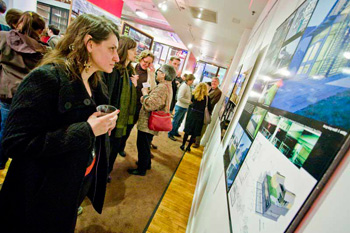 Commentators past and present, from Charles Dickens and Upton Sinclair to Jon Teaford and the opinion section of the Detroit News, have both celebrated and bemoaned the decline of urban manufacturing. While unchecked manufacturing has historically caused pollution and exploited workers, the proud tradition of American innovation built our great cities. Now, rusted factory silos and empty, unremediated brownfields scream a stern reminder of our industrialized history, for better or worse.
Commentators past and present, from Charles Dickens and Upton Sinclair to Jon Teaford and the opinion section of the Detroit News, have both celebrated and bemoaned the decline of urban manufacturing. While unchecked manufacturing has historically caused pollution and exploited workers, the proud tradition of American innovation built our great cities. Now, rusted factory silos and empty, unremediated brownfields scream a stern reminder of our industrialized history, for better or worse.
As the sustainability movement has enticed Americas urban centers, the green brush has begun to paint over these rusted graveyards of former glory by redesigning industrial plots from the ground up. One group furthering this cause nationally and internationally is the Urban Land Institute, whose semi-annual community action grant program connects community organizations with designers and architects to re-envision urban spaces. In Philadelphia, a group of community development experts–led by the Community Design Collaborative–have created Infill Philadelphia, an ambitious five-year initiative to address vacant industrial spaces. Thanks to a community action grant from ULI, they may actually see it completed.
This is a big issue. We are no longer a Victorian industrial center, but a lot of the remnants of that era are still around and they have been abandoned for a really long time, says CDC Executive Director Beth Miller. The private market hasnt quite figured out how to reuse them or else theyd be in use.
The Community Design Collaborative, the Philadelphia Industrial Development Corporation, and ULI Philadelphia are partnering to complete Phase III of the initiative, which included a showcase of over 50 industrial sites in contention for a facelift. After the showcase in February and March 2010, the CDC set out to find three architecture firms willing to work pro-bono to present innovative ideas for one of three chosen sites. Each site seeks to tackle a unique challenge of urban life–from connecting citizens to their community via walkways and bike paths to creating an effective mixed-use development. The three projects will be presented in a design challenge, an exhibit showcase and a companion publication later this year. The addition of this grant funding will allow for further promotion and will allow Infill Philadelphia the opportunity to petition for implementation in the citys many ailing neighborhoods.
What this grant helps us to do is to take this to a national stage and really celebrate Philadelphia innovation and design, Miller says. Its easy to throw up your hands and say it cant be done. But with a network of people really interested in saying how can we approach this? we can connect those who have implemented urban design with those who make the decisions.
Source: Beth Miller, Community Design Collaborative
Writer: John Steele